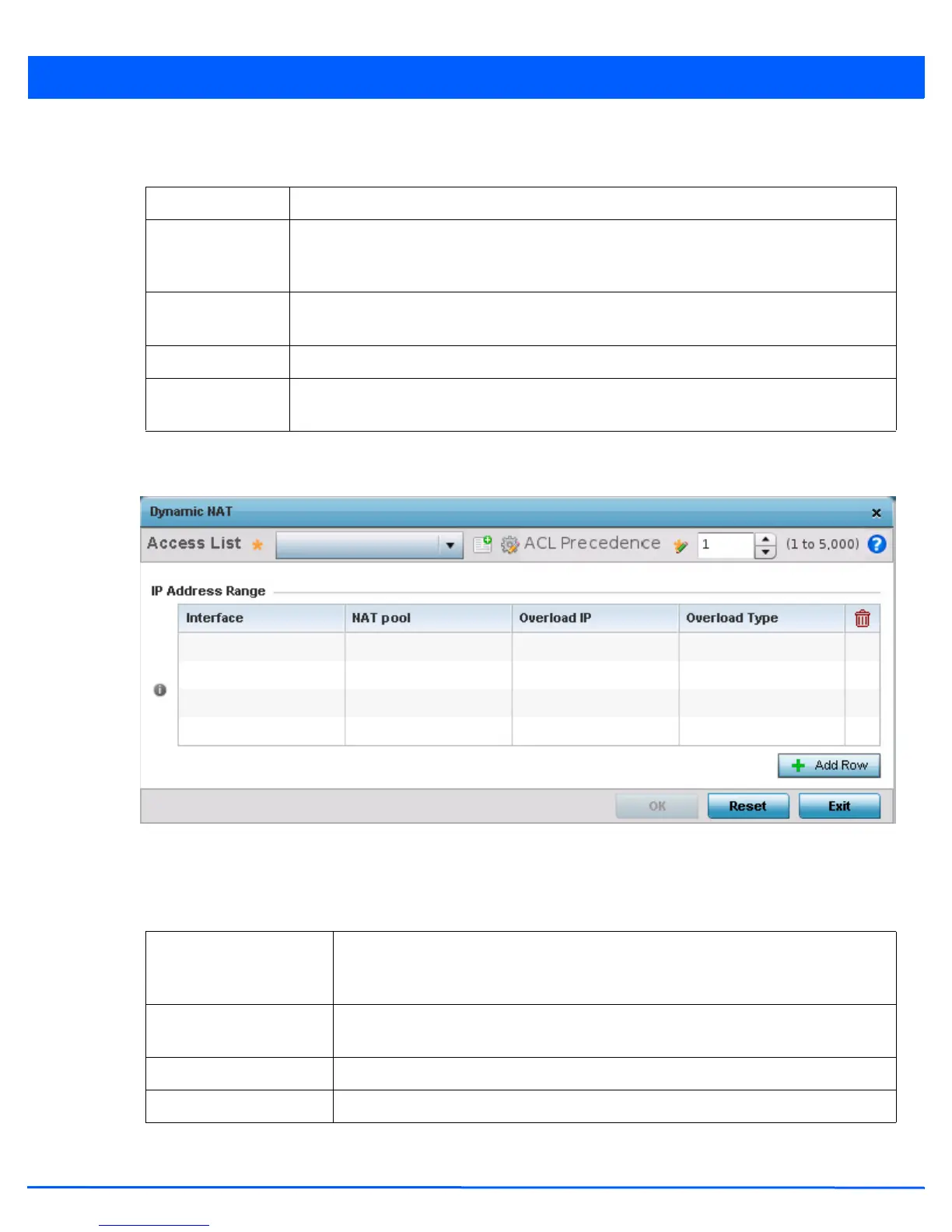Device Configuration 5 - 135
5. Review the following Bridge NAT configurations to determine whether a new Bridge NAT configuration requires creation
or an existing configuration modified or removed:
6. Select Add to create a new Bridge VLAN configuration, Edit to modify an existing configuration or Delete to remove a
configuration.
Figure 5-84 Profile Security - Dynamic NAT screen
7. Select the ACL whose IP rules are to be applied to this policy based forwarding rule. A new ACL can be defined by selecting
the Create icon, or an existing set of IP ACL rules can be modified by selecting the Edit icon.
8. Use the IP Address Range table to configure IP addresses and address ranges that can used to access the Internet.
9. Select + Add Row to set the IP address range settings for the Bridge NAT configuration.
ACL Lists the ACL applying IP address access/deny permission rules to the Bridge NAT configuration.
Interface Lists the communication medium (outgoing layer 3 interface) between source and destination
points. This is either the access point’s pppoe1 or wwan1 interface or the VLAN used as the
redirection interface between the source and destination.
NAT Pool Lists the names of existing NAT pools used with the Bridge NAT configuration. This displays only
when Overload Type is NAT Pool.
Overload IP Lists the address used globally and collectively for numerous local addresses.
Overload Type Lists the overload type used with the listed IP ACL rule. Set as either NAT Pool, One Global
Address or Interface IP Address.
Interface Lists the outgoing layer 3 interface on which traffic is re-directed. The interface can be an
access point WWAN or PPPoE interface. Traffic can also be redirected to a designated
VLAN.
NAT Pool Displays the NAT pool used by this Bridge NAT entry. A value is only displayed only when
Overload Type has been set to NAT Pool.
Overload IP Lists whether a single global address collectively supports numerous local addresses.
Overload Type Displays the override type for this policy based forwarding rule.

